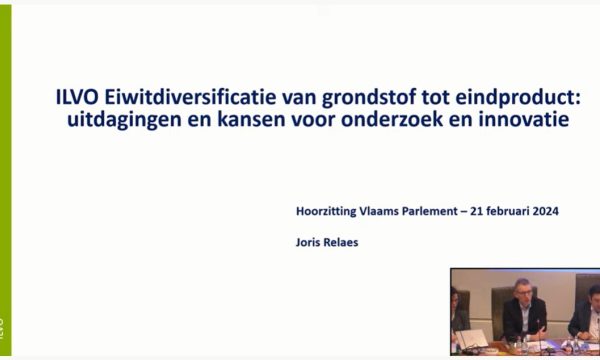Project news Plant attacker of the month December: Curtobacterium flaccumfaciens, the multi-coloured bacterium
Summer 1921 near Redfield, South Dakota. An unknown disease rages over the fields of common bean (Phaseolus vulgaris). The farmer tells the investigator that he believes the disease to be the same one that killed 90% of his bean crop the previous year. He planted the seed harvested from the 1920 season, resulting in an estimated 25% loss. The investigator is Florence Hedges, a research associate of the prominent USDA bacteriologist Erwin F. Smith. He who plays a major role in proving that bacteria can cause plant disease. He is also a rare progressive individual at that time who provides opportunities for women to work in science. Hedges began working on bean diseases in his lab after graduating from the University of Michigan in 1900. She isolates a Gram-positive bacterium from the diseased bean plants and fulfills Koch's postulates. The pathogen is now known as Curtobacterium flaccumfaciens. The name fits it perfectly: it is a short, rod‐shaped bacterium that makes plants wilt.
Bacterial strains of Curtobacterium are found globally in various ecosystems. They are most abundant in terrestrial environments, living on plants and in soil. A particular quality is their involvement in decomposition of litter and in the formation of humus. Our interest is Curtobacterium as an economically important plant pest. Curtobacterium flaccumfaciens is the only species of Curtobacterium associated with plant pathogenesis.
Curtobacterium flaccumfaciens has a variable appearance as seen on culture media as well as in genetic analysis. It shows distinct pathogenicity to specific plant hosts. Therefore, it is divided into pathogenic variants, pathovars (pv.). The four major pathovars are:
| pathovar | disease and plant host |
|---|---|
| betae | leaf silvering and bacterial wilt of beet |
| flaccumfaciens | bacterial wilt of bean and bacterial tan spot of soybean [figures] |
| oortii | bulb spot and bacterial wilt of tulip |
| poinsettiae | stem canker and leaf spot of Euphorbia pulcherrima |
Two additional pathovars have been described in China but they have not yet been approved as such: pv. beticola, causing leaf spot on sugar beet, and pv. basellae, causing leaf spot of the green leafy vegetable malabar spinach.
Curtobacterium flaccumfaciens is an old enemy that has showed up again. The most notorious is pv. flaccumfaciens (Cff). This pathovar had nearly disappeared in the USA by the early 1980s, but returned with a vengeance 30 years later in all bean producing states. It then spread to South America where it has had devastating effects on bean production in Brazil. In the past few years Cff has appeared in countries in the Near East, where it is knocking on the door to the EU.

Major pathology of Cff is displayed on Phaseolus bean (left, from Howard F. Schwartz on Bugwood.org), less commonly on Vigna bean and, most recently, emerged on soybean (middle, from Embrapa infoteca in Brazil). The multi-coloured bacterium on culture media (right, from Robert Harveson University of Nebraska).

Silvering disease caused by pv. betae was originally diagnosed on red beet in the 1950s in the UK. After being silent for almost six decades, the disease unexpectedly appeared in the official sugar beet variety tests in Belgium. It was then discovered that the pathogen had established in the seeds of the parental inbred lines of the beet hybrids from Western European breeders. ILVO is currently researching this pathovar under contract. (Image of silvering beet from A. Wauters, IRBAB).

Pathovar oortii was first diagnosed on tulip in the 1960s in the Netherlands as the cause of ‘yellow pock disease’(image from WUR). It still occurs in the tulip bulb cultivation but at a low level due to certification. Recently at ILVO, the bacterium was identified as the cause of ‘basal plate yellow’ of garden lily, causing dwarf plants.

After its first appearance in 1948, pv. poinsettiae emerged in the late 1950s in the USA in the cultivation of Poinsettia pulcherimma, well known for its red and green foliage and widely used in Christmas floral displays. It still occurs in the ornamental states at the east coast. The disease was not found in the EU until the past decade, when it was noticed in several nursery greenhouses in Slovenia and Germany. There have been no new findings after the eradication measures were implemented (image from Margery Daughtrey, Cornell University).
The pathways for spread often impede effective control of the pests: pv. flaccumfaciens and pv. betae are seed-borne, pv. oortii hides latently in bulbs and pv. poinsettiae in cuttings. Cff can overwinter, survive and remain viable in bean crop residues. Control is based mainly on the use of tested and certified seeds and plant material and on crop rotation. However, over the past decade, Cff was discovered as resident on the leaves of other plants, i.e. corn, wheat, alfalfa and sunflower, which were used in rotation with bean.
Curtobacterium flaccumfaciens pv. flaccumfaciens is regulated as an EU quarantine pest. Its introduction and spread on the EU territory must be prevented. It has been sporadically found in several EU Member States in the past, but is currently not known to occur. Most recently, in 2011, a particular case of Cff was diagnosed in Germany in several soybean cultivars in a field which were tested for their fitness under mid-European conditions.
Cff is a priority pest in the programme of the European Reference Laboratory on Plant Health for bacteria. It is also a research topic in an Euphresco project. Both programs start on 1/1/2021. The activities involve all pathovars of Curtobacterium flaccumfaciens, isolated from their common plant host but also from non-host plants and from environmental samples. The participating labs will work essentially on reliable diagnosis, molecular identification and virulence profiles on bean and soybean cultivars. The main pathway for entry the EU is seed, thus the focus of detection is on seed lots. ILVO has the leading role for both programs.

Image: infected bean seeds stained by Cff color variants. From Robert Harveson, University of Nebraska.


